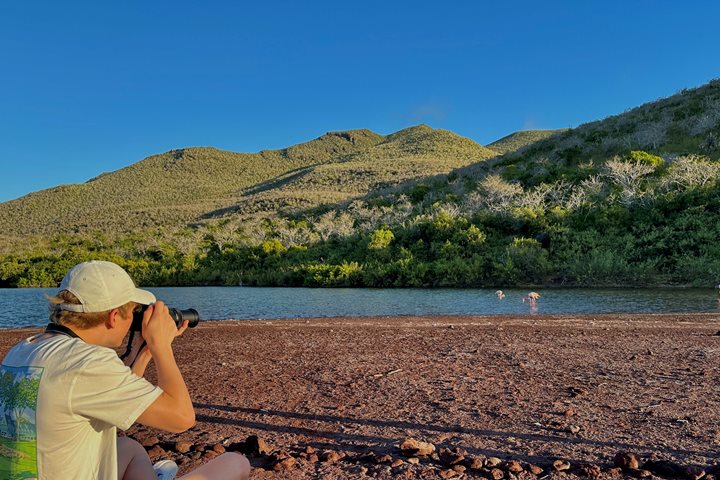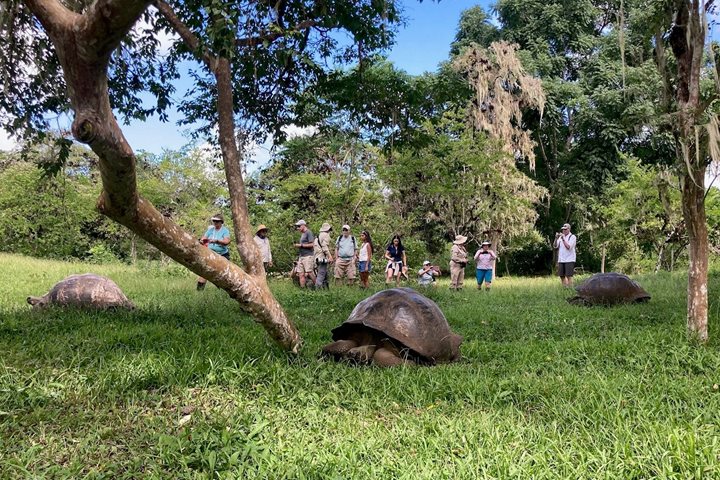Located in the northeast region of the archipelago, Tower Island or Genovesa is home to over one million seabirds. The highlights here are diverse and unique, including the largest colony of red-footed boobies.
We started our day with a pre-breakfast kayak on the calm waters of the caldera. After breakfast, we headed out for a walk along the white coralline beach inside Darwin Bay. We were surrounded by Nazca boobies, red-footed boobies, swallow-tailed gulls, and frigatebird chicks. We were happy to find a few marine iguanas. The iguanas are smaller and darker on Genovesa due to the island’s unique ecology, which is so different from the islands we have seen so far. The sky was full of birds flying all over like they did in prehistoric times. Back on board, we prepared for our last snorkel of the expedition. We had close encounters with amazing species and many colorful fish. After this great adventure, we returned to the ship, which was anchored inside the caldera. We were briefed about our departure and enjoyed our last delicious lunch.
After a great Ecuadorian lunch, we headed for the famous Prince Philip’s Steps, where we were determined to find the elusive short-eared owl. Their brilliant camouflage makes them difficult to spot among the rocks. Luckily for us, we found two owls hiding between rocks for shelter from the strong sea breeze. Back on board, we enjoyed a wonderful wine tasting as we sailed through the caldera.
As we look back and gaze at the islands for the last time, this place seems timeless. Our experience has been unforgettable, and memories of this special place where the wildlife has no fear will remain deep in our hearts. Our experience allowed us to realize that we are not so different from the wildlife we observed. We enjoyed an incredible sunset from the decks of National Geographic Islander II. We were tired but happy to remember the incredible places we visited and the unique creatures that made our trip so amazing.







